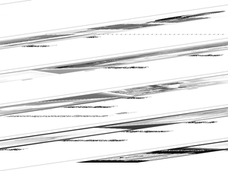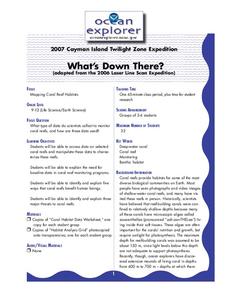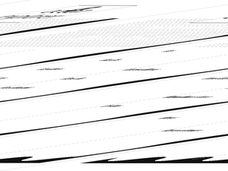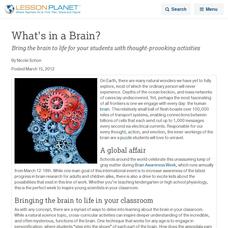Curated OER
Easy as Pi
Students describe the importance of structural features that increase surface area in a coral reef habitat. In this investigative lesson students quantify the impact of modifications on surface area in model habitats.
Curated OER
The Chemosynthetic Cafe
Students study photosynthesis and chemosynthesis. In this chemosynthetic lesson students explain the processes of these and define terms.
Curated OER
Who Has the Light?
Students study ways in which the ability to produce light may be useful to deep-sea organisms. In groups, they research and present to the rest of the class, how a specific organism is able to produce bioluminescence.
Curated OER
Blinded by the Light
Students recognize that the colors they see are a result of the reflection of light. In this light and color lesson, students predict what color will be produced when lights are mixed. They identify the three primary colors and secondary...
Curated OER
It's a Gas! Or is it?
Students describe the effects of temperature and pressure on solubility of gases and other materials. In this investigative lesson students read an article and answer questions about it.
Curated OER
Where There's Smoke......
Students use fundamental relationships between melting points, boiling points, solubility, temperature and pressure to develop explanations. In this chemistry lesson students complete an activity.
Curated OER
What's Down There?
Students analyze data on coral reefs and use this to help characterize reefs. In this mapping coral reefs lesson students identify and explain the major threats to coral reefs.
Curated OER
A Hydrothermal Adventure
Students analyze hydrothermal vents. In this hydrothermal vents lesson, students discover the effects of hydrothermal vents on tectonic plates. Students make model hydrothermal vents to understand how they form and operate.
Curated OER
Picture This!
Students compare and contrast different types of light on the electromagnetic spectrum. In this investigative lesson plan students create a photographic image that demonstrates the infrared, ultraviolet and polarization...
Curated OER
Through Other Eyes
High schoolers describe the structures of crustaceans and the features that give organisms capabilities that exceed those of humans. In this investigative lesson students replicate some of the features of photo-receptors in a...
Curated OER
Entering the Twilight Zone
Students describe major features of cold seep communities and list organisms that are found in these communities. In this water habitat lesson students examine trophic levels, describe the process of chemosynthesis and list...
Curated OER
What is a Karst?
Students examine the process that creates limestone. In this limestone lesson students complete a worksheet and participate in a lab activity.
Curated OER
Life is Weird
Students study the organisms that are found in cold seeps and see how they interact with each-other. In this biological organism lesson students describe the major features of cold seeps and the process of chemosynthesis.
Curated OER
This Life Stinks
Students study cold seeps and see how organisms obtain energy from methane. In this sinkholes lesson students examine the relevance of chemosynthesis to communities.
Curated OER
Hawaiian Bowl!
Students describe the movement of tectonic plates in the Hawaiian archipelago region. They describe how a combination of hotspot activity and tectonic plate movement could produce the arrangement of seamounts obse
Curated OER
Researching the World's Oceans
Students research and compare important features of the oceans based on current data. They examine the globe or map, determine the major oceans of the world, and record their names on the data sheet.
Curated OER
Twisted Vision
Students explain polarization vision and why some animals have it while others do not. They examine the reasons why it would be helpful for marine organisms to have polarized light.
NASA
Earth's Global Energy Budget
Introduce your earth science enthusiasts to the earth's energy budget. Teach them using an informative set of slides that include illuminating lecturer's notes, relevant vocabulary, embedded animations, colorful satellite maps, and a...
Curated OER
National Marine Sanctuaries Fish
Information is provided on Gray's Reef, Florida Keys, and Flower Garden Banks marine sanctuaries. Young marine biologists then visit the FishBase and REEF databases to collect fish species information for each location. They then...
NOAA
Methane Hydrates – What's the Big Deal?
Have you ever tried to light ice on fire? With methane hydrate, you can do exactly that. The ice forms with methane inside so it looks like ice, but is able to burn. The lesson uses group research and a hands-on activity to help scholars...
Curated OER
The Titanic Impact of Science
Discuss personal ideas about science and how a filmmaker can employ the arts to promote science. After reading an article, young scientists will discover how James Cameron is trying to interest people in the oceans. In groups, they will...
Curated OER
Preparing for the Lewis and Clark Expedition
Here's a worksheet to help your class envision the Lewis and Clark expedition. Your young historians read a one-page article on the expedition, use context clues and a dictionary to define eight terms from the article and write a...
Curated OER
What's in a Brain?
Bring the brain to life for your students with thought-provoking activities
Curated OER
Building a Documentary Library
Documentary films allow your class to visit new places and gain a deeper understanding of complex issues.
Other popular searches
- Ocean Exploration Tools
- Pacific Ocean Exploration
- Ocean Exploration Food Web
- Ocean Exploration Technology
- Bill Nye Ocean Exploration
- Ocean Exploration Time Lines
- Human Ocean Exploration
- Ocean Exploration Time Lime
- Bill Nye: Ocean Exploration
- Ocean Exploration Expeditions
- Ocean Exploration Timelime

























